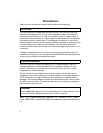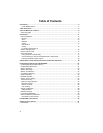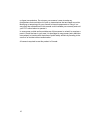9
The FCC Wants You To Know
The FCC Wants You To Know
This scanner has been tested and found to comply with the limits for a scanning
receiver, pursuant to Part 15 of the FCC Rules. These limits are designed to
provide reasonable protection against harmful interference in a residential
installation. This scanner generates, uses, and can radiate radio frequency energy
and, if not installed and used in accordance with the instructions, may cause
harmful interference to radio communications.
There is no guarantee that interference will not occur in a particular installation. If
this scanner does cause harmful interference to radio or television reception,
which can be determined by turning the scanner on and off, you are encouraged to
try to correct the interference by one or more of the following measures:
• Reorient or relocate the receiving antenna
• Increase the separation between the scanner and the receiver
This device complies with Part 15 of the FCC Rules. Operation is subject to the
following two conditions: 1) This device may not cause harmful interference, and 2)
this device must accept any interference received, including interference that may
cause undesired operation.
Scanning Legally
Your scanner covers frequencies used by many different groups, including police
and fire departments, ambulance services, government agencies, private
companies, amateur radio services, military operations, pager services, and
wireline (telephone and telegraph) service providers. It is legal to listen to almost
every transmission your scanner can receive. However, there are some
transmissions that you should never intentionally listen to. These include:
• Telephone conversations (cellular, cordless, or other private means of
telephone signal transmission)
• Pager transmissions
• Any scrambled or encrypted transmissions
According to the Electronic Communications Privacy Act (ECPA), you are subject
to fines and possible imprisonment for intentionally listening to, using, or divulging
the contents of such a conversation unless you have the consent of a party to the
conversation (unless such activity is otherwise illegal). This scanner has been
designed to prevent the reception of cellular telephone transmissions and the
decoding of scrambled transmissions. This is done to comply with the legal
requirement that scanners be manufactured so they are not easy to modify to pick


















